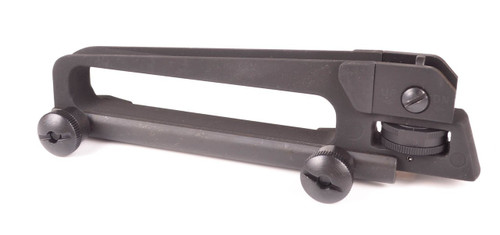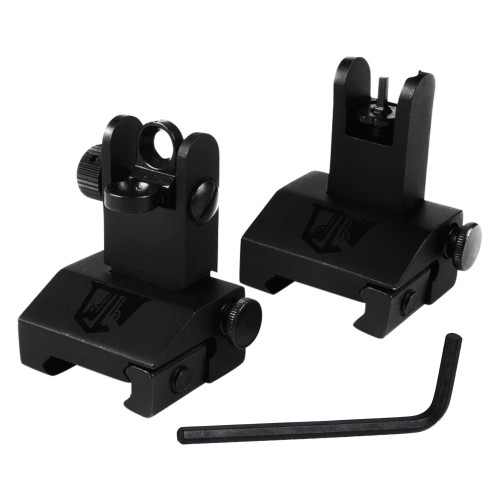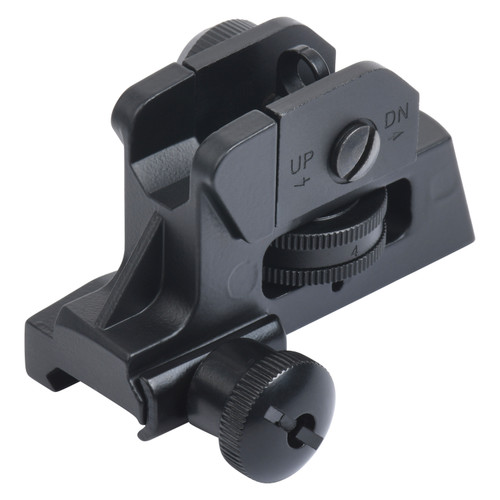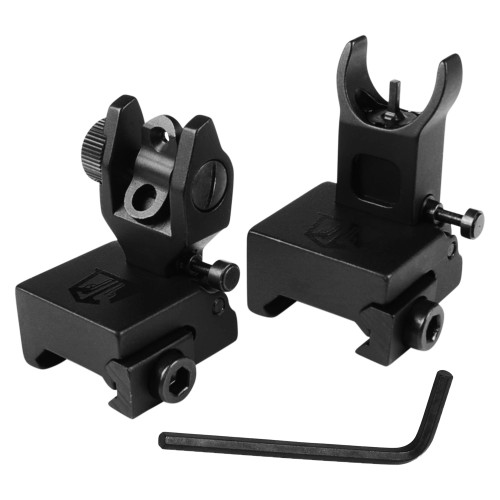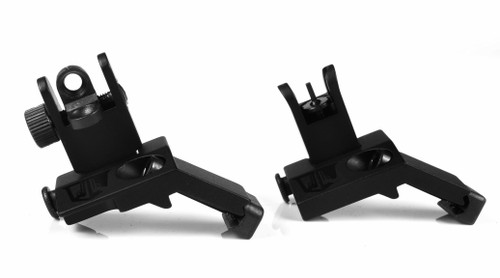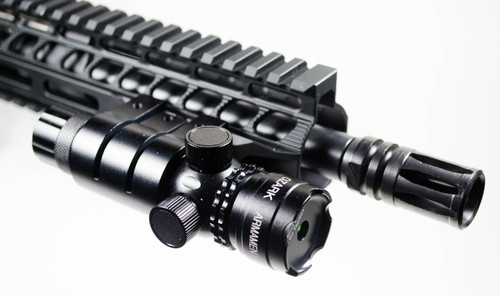Posted by Matt Rice on Feb 12th 2024
Expert Tips: How to Line Up AR 15 Iron Sights for Perfect Accuracy
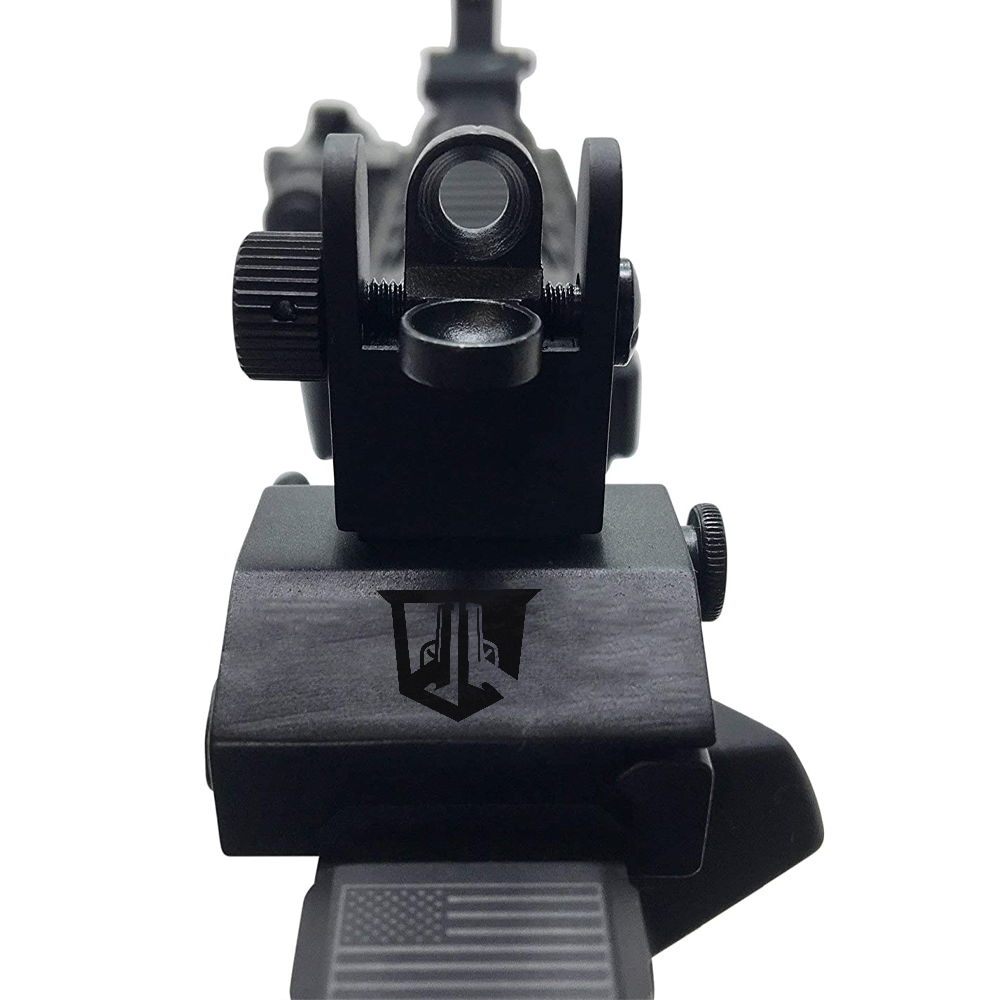
Lining up AR-15 iron sights might seem like a challenging job, but it's a skill that can drastically improve your shooting accuracy. I've spent countless hours on the range and in the field, and I've learned that mastering the alignment of your rifle's iron sights is foundational. Whether you're a seasoned shooter or just starting out, understanding the intricacies of front and rear sight alignment is crucial. In this text, I'll guide you through the steps to properly line up your AR-15 iron sights, ensuring your shots hit their mark every time. With a focus on practical tips and clear instructions, you'll be zeroing in on your target with confidence and precision.
Key Takeaways
- Both front and rear AR-15 iron sights are essential for proper sight alignment and achieving accurate aim. Positioning them as far apart as possible on the rail enhances precision by providing a longer sight radius.
- Achieving the proper sight picture involves aligning the top of the front sight post in the center of the notched rear sight and ensuring the target sits atop the front sight, focusing sharply on the front sight with the target slightly blurry.
- Adjusting iron sights for windage and elevation is crucial for precision shooting. Windage adjustments move the point of impact left or right, while elevation adjustments change the impact up or down. Tools and specific adjustment features, like those on the A2 Rear Iron Sight, facilitate accurate aim at various distances.
- Choosing the right iron sights for your AR-15 depends on your shooting needs and preferences. Options range from traditional setups like
Understanding the Basics of AR-15 Iron Sights
When setting up AR15 iron sights, the first thing I always emphasize is the importance of both the front and rear sights. A common question I get asked is, "Do you need front and rear iron sights?" The answer is a resounding yes for achieving accurate aim and shot placement. Each sight plays a critical role in how to line up AR 15 iron sights effectively.
Starting with the front sight, it's your primary reference point for targeting. The placement of this sight is vital, and traditionally, it's positioned at the end of the barrel to ensure a long sight radius. This length between the front and rear sights helps with more precise alignment. For instance, models like the A2 Front Sight are designed for easy visibility and accurate alignment on the AR-15.
The rear sight, on the other hand, varies in style but serves to frame the front sight and target within its aperture or notch. Whether you're using a Carry Handle Rear Sight for a classic look and feel or prefer the modern convenience of Micro Flip Up Backup Sights, the rear sight's placement on the upper receiver's end allows the shooter to focus on the front sight while still being aware of the target.
Check out our guide on removing A2 Front Sights here.
When aligning iron sights on an AR-15, the goal is to form a proper sight picture. The "Sight Picture - AR-15" involves aligning the top of the front sight post in the center of the notched rear sight, with the target sitting atop the front sight. This alignment ensures that your bullet will hit where the sights aim, assuming correct bullet trajectory and windage adjustments.
For those wondering "Where do you place iron sights?" or "Where to place iron sights on rifle?", the answer varies based on the model and personal preference. But, for optimal performance, aligning them as far apart as possible will generally offer a better sight picture. Models like the 45 Degree Flip Up Backup Sights or the Fixed Canted Iron Sights by Ozark Armament offer versatile mounting options that suit different shooting styles and scenarios.
Adjusting iron sights involves understanding windage and elevation. The windage adjustment moves the point of impact left or right, while elevation changes the impact up or down. For instance, the A2 Rear Iron Sight provides reliable adjustments for achieving precise aim at various distances. Start with the basics and go from there.
Choosing the Right Iron Sights for Your AR-15
When it comes to AR-15 iron sights setup, mastering the sight picture and knowing where to place iron sights on your rifle are crucial for accuracy and performance. In exploring options for upgrading or installing iron sights, one might ask, "Do you need front and rear iron sights?". The answer is a resounding yes. Both front and rear sights are essential for achieving a precise sight picture with your AR-15, as they work together to align your aim accurately.
Considering options, it's important to evaluate the specific needs and preference of the shooter. For those seeking versatility and reliability, Ozark Armament offers a wide range of iron sight models suited for any scenario. Let’s investigate into some choices.
- Carry Handle Rear Sight and A2 Front Sight: This classic combination resembles the traditional M16 sight picture. It's perfect for shooters preferring a standard, tried-and-true setup. The A2 front sight pairs harmoniously with the Carry Handle Rear Sight, anchoring a solid AR15 iron sights setup.
- Battle Sights (BUIS) and HK Style BUIS: For those looking for robust, yet flip-up options, both the Battle Sights and HK Style BUIS provide durable solutions that can withstand the rigors of tactical use. They’re easily deployed when needed and offer a low profile when folded down.
- 45 Degree Flip Up Backup Sights and Micro Flip Up Backup Sights: For shooters who employ optical scopes but want reliable backup iron sights, these models offer an ingenious solution. Mounted at a 45-degree angle, they allow for quick, unobstructed transition from scope to iron sights, ensuring you're never without a sighting option.
- Fixed Canted Iron Sights: Designed for speed and convenience, these sights ensure that creating a sight picture with AR-15 iron sights is quicker and less cumbersome. Excellent for close-range targeting, they complement your primary optics without interference.
Installing Your AR-15 Iron Sights
When it comes to setting up your AR-15 for superior accuracy and reliability, installing the right iron sights is crucial. I've combed through various options and found that specifics like where to place iron sights on the rifle greatly impact your sight picture and overall shooting performance. In this guide, I'll walk you through the essentials of installing your AR-15 iron sights, ensuring you get the most out of your firearm.
Choosing the Right Iron Sights
First, let's talk about the variety of iron sights available and how they fit into your AR15 iron sights setup. Whether you're looking for traditional styles or more advanced setups, options like the Carry Handle Rear Sight, A2 Front Sight, and HK Style BUIS offer a good range of choices for different preferences. But, for those who prioritize quick target acquisition in dynamic scenarios, 45 Degree Flip Up Backup Sights or Micro Flip Up Backup Sights might be the way to go.
The A2 Rear Iron Sight and Fixed Canted Iron Sights are also solid choices for enhancing accuracy without complicating the setup. When deciding where to place iron sights on the rifle, it’s typically advised to position them as far apart as possible on the rail to improve the sight picture - AR-15. This enhances accuracy by providing a longer sight radius.
Installation Process
How to line up AR 15 iron sights involves precise steps. Firstly, ensure your rifle is unloaded and safe to handle. Begin with the rear sight, attaching it to the upper receiver's designated rail slot. For front sights, installation will depend on your barrel's design and the specific sight model. Bolt-on models like the A2 Front Sight may require you to position them on the gas block. If you’re using flip-up sights, ensure they’re mounted in a way that allows them to lie flat when not in use.
Adjusting these sights for windage and elevation can be done with the appropriate tools. Follow the manufacturer's instructions closely here. For a detailed explanation on this, the NRA's guide to iron sight adjustments is a great resource.
Adjusting the Front Sight
When it comes to how to line up AR-15 iron sights, understanding the intricacies of adjusting the front sight is pivotal. It's not just about having both the front and rear sights installed; it's about precision tuning to ensure your shots hit right where you aim.
Firstly, a clear sight picture for AR-15 iron sights demands that both the front and rear sights are correctly aligned. This starts with the correct positioning of the front sight, which is often a topic of debate. Where do you place iron sights on your rifle? The consensus leans towards positioning the iron sights as far apart as possible to enhance sighting accuracy. This is particularly true for Ozark Armament sights, which are designed for optimal performance when given the maximum possible sight radius.
Adjusting your front sight is a detailed process. If you're using an A2 Front Sight or any variant of Ozark Armament's durable and lightweight options such as the Micro Flip Up Backup Sights or the Fixed Canted Iron Sights, the principle remains the same. Using the right tools—like a front sight adjustment tool (you can find one here)—is crucial for precise adjustments.
For those wondering how to line up AR-15 iron sights, remember, the vertical position of the front sight directly impacts your shot's elevation. To adjust the front sight, press down on the detent and rotate the post accordingly. If your shots are hitting too high, you'll need to raise the front sight post, making it appear taller in your sight picture. Conversely, if they're hitting too low, you'll want to lower it. This fine-tuning process is vital in achieving the perfect sight picture with AR-15 iron sights.
Knowing where to place iron sights on the rifle is just the beginning. The true art lies in the meticulous adjustments of the front sight for an exact AR-15 iron sights setup. While the back-up iron sights (BUIS), like the Battle Sights or HK Style BUIS, offer reliability, ensuring your primary sights are accurately dialed in is your key to precision shooting.
Adjusting the Rear Sight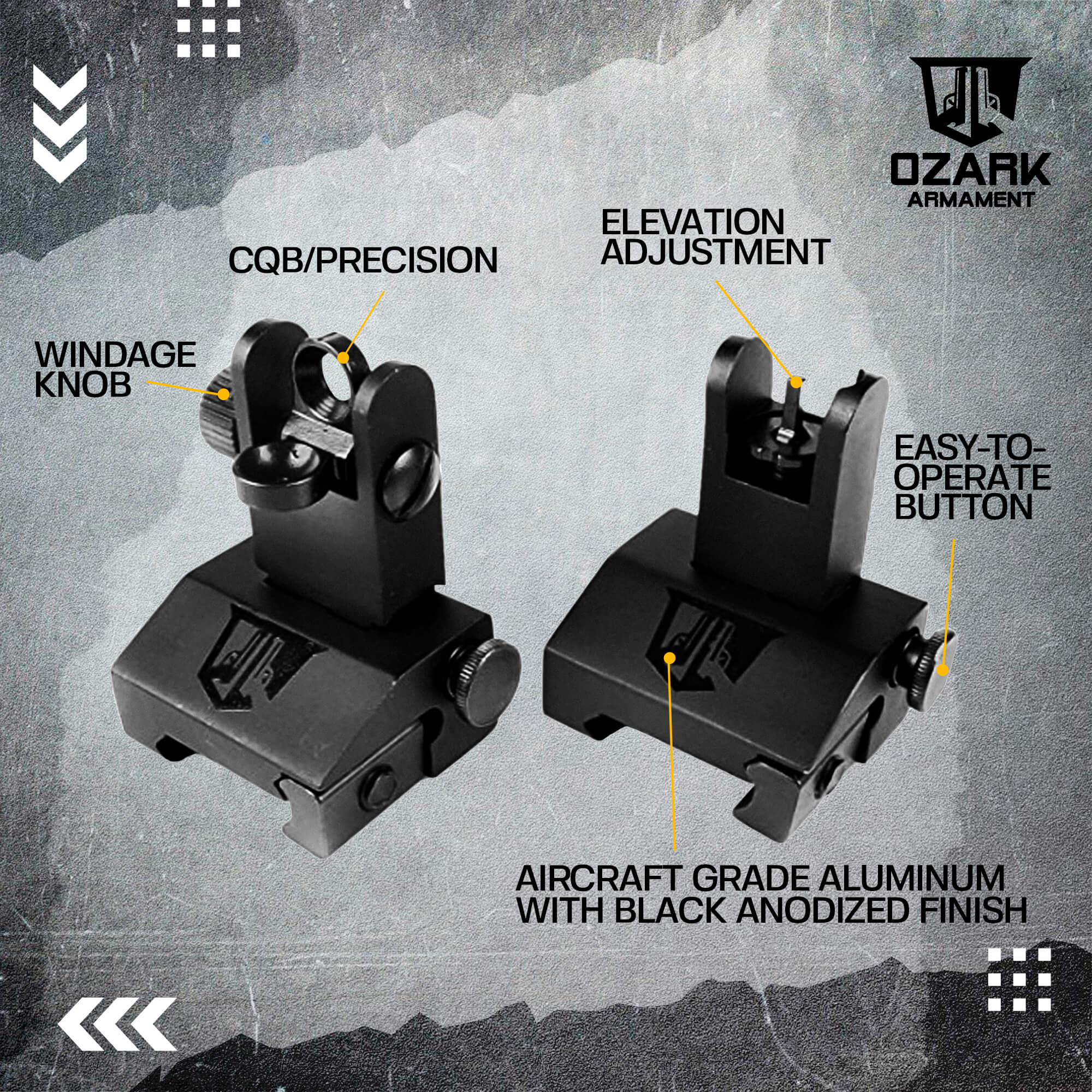
When it comes to how to line up AR-15 iron sights, understanding the rear sight adjustments is crucial. In my experience, getting the sight picture AR-15 iron sights just right requires both skill and knowledge about the adjustments you can make. Let's dig into the specifics of adjusting the rear sight for optimal accuracy.
First, remember, AR-15 iron sights setup generally involves both front and rear components. People often ask, "Do you need front and rear iron sights?" The answer is a resounding yes. Both are essential for achieving a proper sight picture and ensuring your shots land where you intend. Specifically, the rear sight plays a key role in this equation by allowing adjustments for windage and elevation, crucial for accurately lining up your shots at various distances.
To adjust the rear sight for windage, you'll typically find a knob or dial that moves the sight left or right. This movement is essential for aligning your shots horizontally. For those new to this, I strongly suggest referring to reputable guides like the one provided by the National Rifle Association (NRA Guide), which offers in-depth instructions on adjustments. The principle behind this adjustment is straightforward: move the rear sight in the direction you want the shot group to go. This is known as the FORS principle: Front Opposite, Rear Same.
Elevation adjustments, on the other hand, correct the vertical alignment of your aim. This usually involves a different set of dials or knobs that can raise or lower the rear sight. When setting up your AR-15 iron sights, particularly sights like the A2 Rear Iron Sight or the Carry Handle Rear Sight, understanding how to manipulate these adjustments is key.
For those pondering where to place iron sights on a rifle, the golden rule is: as far apart as possible within your rail space. This maximizes the sight radius, enhancing your ability to line up shots with greater precision.
Iron sights such as the Battle Sights (BUIS), HK Style BUIS, and Micro Flip Up Backup Sights from Ozark Armament offer versatile rear adjustment capabilities suitable for a variety of shooting scenarios. Whether you're adjusting for close-quarters practice or long-range accuracy, these sights have you covered.
Sight Alignment: Achieving a Perfect Sight Picture
When it comes to lining up AR-15 iron sights, understanding the basics of sight alignment and sight picture is crucial. I've spent years perfecting my shooting technique and have found that a consistent, accurate sight picture is key to hitting your target every time.
First, let's talk about the AR15 iron sights setup. Do you need both front and rear iron sights? Absolutely. The combination of front and rear sights allows for proper alignment, which is essential for achieving a perfect sight picture. Where to place iron sights on your rifle is also a question that often comes up. Ideally, iron sights should be positioned as far apart as possible within the rail space to maximize the sight radius, enhancing precision.
How to line up AR-15 iron sights involves aligning the front sight post within the notch of the rear sight. The top of the front sight post should be level with the top of the rear sight aperture, with equal space on either side of the front post. This alignment is critical for accurate shooting.
The sight picture with AR-15 iron sights goes a step further, incorporating the target. Once your sights are aligned, focus on the front sight post and position it where you want the bullet to hit. Your target should be slightly blurry while your front sight is in sharp focus. This technique ensures your eyes are properly focused, leading to more accurate shots.
For those new to shooting or looking to enhance their AR-15 setup, Ozark Armament offers a variety of iron sights, including the versatile Carry Handle Rear Sight and the robust Battle Sights (BUIS). Whether you prefer the classic A2 Front Sight or the modern Micro Flip Up Backup Sights, there’s an option tailored to meet your needs. Their Fixed Canted Iron Sights are especially popular for those looking for a permanent, reliable sighting solution.
For further guidance, the National Rifle Association offers an excellent explanation of sight alignment and sight picture principles. You can find more information on their official website.
Remember, practicing your sight alignment and sight picture with various iron sights will enhance your shooting accuracy. Whether it's adjusting the HK Style BUIS for a tighter shot group or utilizing the 45 Degree Flip Up Backup Sights for rapid target acquisition, mastering these skills is essential.
What about aligning M4 Iron Sights you ask? Head over here to our guide on how to zero M4 sights.
Practice Makes Perfect: Developing Your Shooting Skills
When it comes to mastering an AR-15 iron sights setup, there's no substitute for practice. I've spent countless hours at the range, and I've learned that consistent, deliberate practice is the key to developing pinpoint accuracy with your iron sights on a rifle. Whether you're a beginner or an experienced shooter, understanding how to line up AR-15 iron sights effectively can make all the difference in your shooting performance.
Firstly, it's crucial to recognize that both front and rear iron sights are essential for proper sight alignment and sight picture. Some might wonder, do you need front and rear iron sights? The answer is an unequivocal yes. Achieving a perfect sight picture - AR-15 requires aligning the front sight post precisely within the notch of the rear sight while keeping both in line with your target. This might sound straightforward, but obtaining that crisp sight picture demands practice and patience.
For those asking where to place iron sights on the rifle, the general guideline is to mount them as far apart as possible within your rail space. This maximizes your sight radius, directly improving your sighting accuracy. Many shooters, myself included, prefer various models from Ozark Armament's extensive range of iron sights. Their Carry Handle Rear Sight and A2 Front Sight are personal favorites for achieving that traditional sight picture AR-15 enthusiasts strive for. Also, options like their 45 Degree Flip Up Backup Sights and Micro Flip Up Backup Sights offer great versatility for different shooting scenarios.
Improving your shooting skills further involves familiarizing yourself with your iron sights' adjustments. Most AR-15 iron sights, including Battle Sights (BUIS) and HK Style BUIS, feature click adjustments to fine-tune your aim. Understanding the mechanics behind these adjustments can significantly impact your accuracy. A click adjustment typically moves the point of impact by 1 inch at 100 yards, which is critical information when zeroing your sights.
Regular practice sessions should also include varying distances, as shooting a target at close range versus one at 400 meters presents different challenges. Iron sights, particularly those with a longer sight radius like the A2 model, can aid in maintaining accuracy over these distances, although targets might appear slightly "fuzzier."
Tips and Tricks for Lining Up AR-15 Iron Sights
When it comes to ensuring accuracy with an AR-15, the proper alignment of iron sights is pivotal. I've gathered some effective strategies to help shooters, whether novice or experienced, in aligning and optimizing their AR-15 iron sights for maximum precision.
First off, it's crucial to understand that both front and rear iron sights are necessary for accurate shooting. Without one, the other lacks context, making accurate targeting nearly impossible. For those considering Ozark Armament's range, the options like the Carry Handle Rear Sight or A2 Front Sight ensure that shooters have reliable and durable sights that pair perfectly with each other.
One of the essential steps in how to line up AR-15 iron sights is establishing a clear sight picture. This involves focusing sharply on the front sight while keeping the target slightly blurry, and ensuring that the front sight is centered within the rear sight. This process can greatly benefit from the use of Battle Sights (BUIS) or HK Style BUIS, which are designed for quick and precise targeting.
As for where to place iron sights on the rifle, the general rule is the further apart, the better. This maximizes the sight radius, enhancing your ability to shoot accurately. Products like the A2 Rear Iron Sight or Fixed Canted Iron Sights from Ozark Armament offer flexibility in distance, making it easier to achieve the desired accuracy.
Adjusting your sights is another vital aspect. Many high-quality sights, such as those offered by Ozark Armament, feature click adjustments for windage and elevation, making precise, incremental changes straightforward. This feature is a game-changer, especially when shooting at varying distances.
Practicing with different models, such as the 45 Degree Flip Up Backup Sights or Micro Flip Up Backup Sights, can also enhance your familiarity and comfort with various sighting options, eventually improving your shooting accuracy.
Do remember, achieving excellence in aligning iron sights takes practice and patience. Regularly visiting the range and working on your sight picture and sight alignment will refine your skills over time. For more in-depth guidance, checking authoritative sources such as the National Shooting Sports Foundation (NSSF) can further augment your knowledge and capabilities.
Wrapping Up
Mastering the art of lining up AR-15 iron sights is a journey that demands patience, practice, and a deep understanding of the basics. I've shared insights on achieving perfect sight alignment and the crucial role of a clear sight picture. Remember, the distance between your iron sights can dramatically affect your precision—so spread them out as much as your rail allows. It's also vital to keep the front sight in sharp focus, allowing the target to blur slightly. This technique, along with regular practice, will significantly enhance your shooting accuracy. Whether you're adjusting for windage or elevation, familiarizing yourself with various iron sight models, or simply striving for that pinpoint accuracy, the key lies in consistent practice and a willingness to learn. Don't hesitate to seek further guidance from authoritative sources. With dedication and the right approach, you'll find that lining up those iron sights becomes second nature, paving the way for remarkable shooting performance.
Frequently Asked Questions
What is the advantage of using both front and rear iron sights on an AR-15?
Using both front and rear iron sights provides better accuracy by ensuring proper alignment of the sights with the target. It helps shooters to focus on the sight alignment and sight picture, which are crucial for achieving pinpoint accuracy.
Why should iron sights be positioned as far apart as possible?
Positioning iron sights as far apart as possible within the rail space maximizes the sight radius, which enhances precision. A longer sight radius makes small alignment errors less significant, improving overall shooting accuracy.
How do you achieve proper sight alignment with AR-15 iron sights?
Proper sight alignment with AR-15 iron sights is achieved by aligning the front sight post within the rear sight aperture, ensuring that the front sight is centered and that there is equal spacing on either side of the front post.
What is the importance of sight picture in shooting accuracy?
Sight picture is crucial for shooting accuracy as it involves focusing on the front sight while aligning it with the target, ensuring the front sight is sharp and the target slightly blurry. This technique helps in maintaining a consistent and accurate shot.
How do adjustments on iron sights affect accuracy?
Adjusting iron sights for windage (left-right movement) and elevation (up-down movement) affects accuracy by compensating for environmental factors and shooting distance. Proper adjustments ensure the point of aim is the point of impact.
Why is practicing with different iron sights recommended?
Practicing with different models of iron sights is recommended to improve familiarity and adaptability. It helps shooters to become comfortable with various sight designs and adjustments, enhancing their ability to achieve accuracy with any iron sight setup.
What role does consistent practice play in achieving accuracy with iron sights?
Consistent and deliberate practice is essential in mastering the alignment and sight picture with iron sights, developing muscle memory, and honing shooting skills. It allows shooters to achieve and maintain pinpoint accuracy over time.
ARTICLE WRITTEN BY MATT RICE, OWNER OPERATOR OF OZARK ARMAMENT

